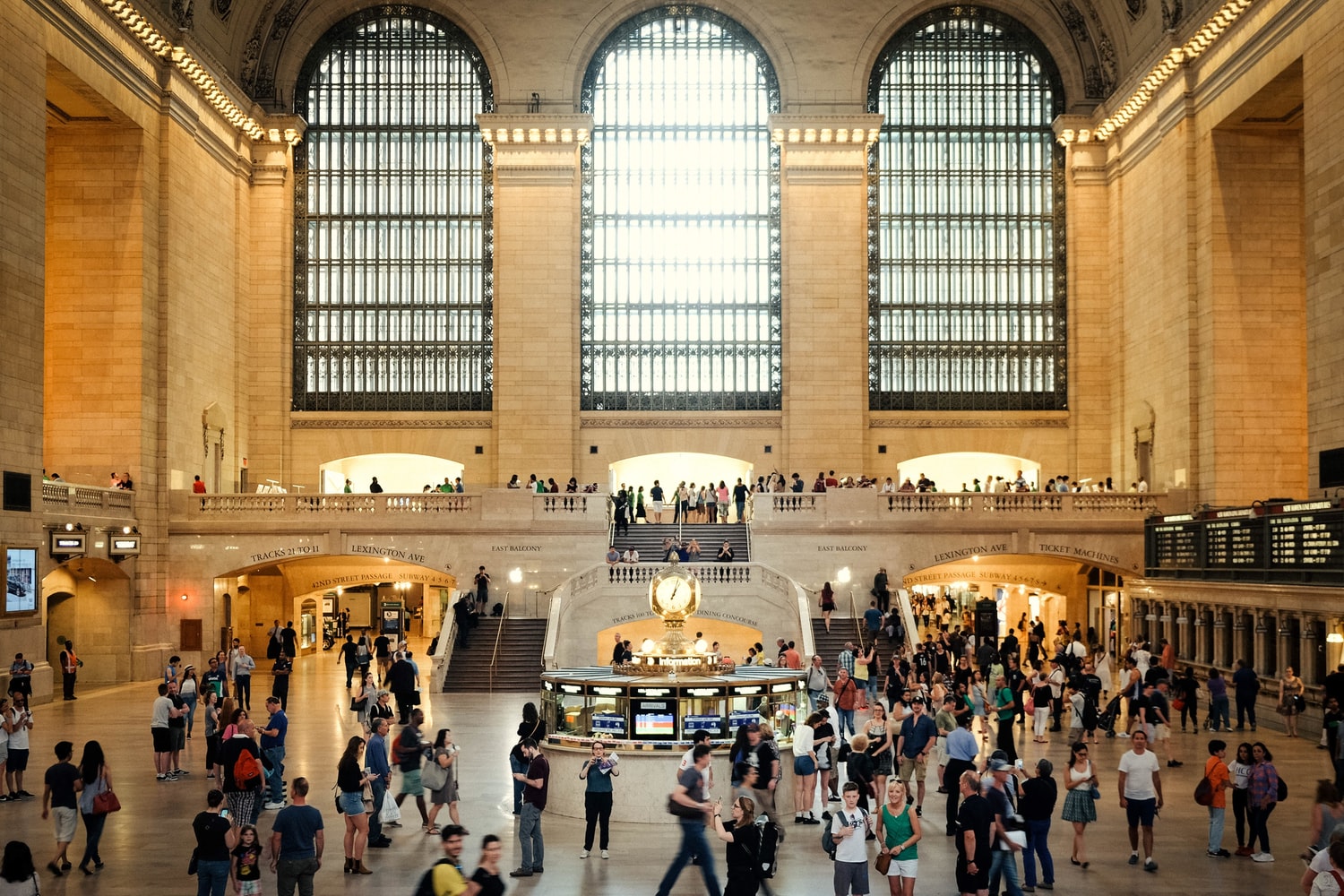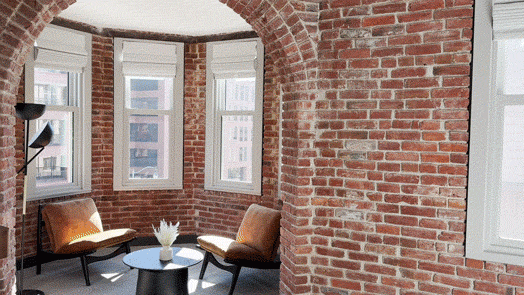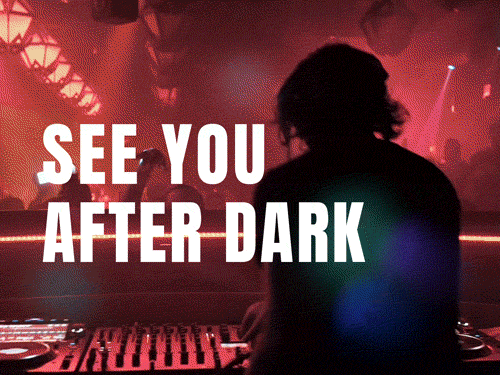It’s time to explore New York City’s standouts in architecture and design. With so many of Manhattan’s iconic buildings packed into an area of under one square mile, Midtown is a design lover’s dream. In addition to those well-known must-see places, it’s also home to a host of lesser-known architectural marvels. Pull on a good pair of walking shoes and get ready to enjoy the sites with this handy walking tour guide.
1. GRAND CENTRAL TERMINAL
89 E 42nd St, New York, NY 10017
This world-famous landmark not only connects NYC to the world, but is a major shopping and dining destination as well. Step into its airy main concourse and find yourself surrounded by Beaux-Arts splendor, from the Tennessee marble floors to the majestic (but astronomically inaccurate) zodiac mural adorning the vaulted ceiling. Keep your eyes peeled for the stylized oak leaves and acorns hidden atop pillars, suspended from chandeliers, and in many other nooks and crannies: they were symbols of the Vanderbilt family, the tycoons whose railroad empire was the terminal’s original raison d’être.
2. ROCKEFELLER CENTER
45 Rockefeller Plaza, New York, NY 10111
For a concentrated look at an early heyday of skyscraper building, there’s no better place than Rockefeller Center. This group of 14 limestone buildings, all constructed between 1929 and 1940, is richly detailed with Art Deco motifs and sculptures that capture the decade’s spirit of industry and creativity. Get a well-informed take on the buildings’ history and design with a guided tour of the Center’s buildings, gardens, and public spaces.
3. SEAGRAM BUILDING
375 Park Avenue, New York, NY 10152
This monumental structure is the first high-rise building designed by Ludwig Mies van der Rohe, one of the pioneers of Modernist architecture. Dark glass framed in bronze creates a flowing transition between the outdoor granite plaza and internal spaces designed to maximize natural light. With minimal embellishment, the building’s structure and materials take center stage, making an audacious statement that continues to stand out as a striking example of functional aesthetics.
4. JP MORGAN CHASE BUILDING
270 Park Avenue, New York, NY 10712
Midcentury architecture was largely a man’s world — but Natalie de Blois forged her own path through that boys’ club. She frequently partnered with Gordon Bunshaft, though it was said of their collaboration that “he took all the credit and she did all the work.” Regardless, her bold designs for major corporate headquarters helped shape Manhattan’s skyline and earned her accolades (sometimes decades after the fact). Visit this arresting, glass-clad skyscraper — originally known as the Union Carbide Building — while you still can. It’s slated for demolition in 2019 as part of Midtown East’s rezoning project.
5. ST. PATRICK’S CATHEDRAL
5th Ave between 50th and 51st St, New York, NY 10022
Nestled among newer buildings that dwarf its 330-foot height, St. Patrick’s Cathedral nonetheless holds its own as an architectural landmark. Completed in 1879, this Gothic Revival church is lavished with medieval-inspired details from the twin spires that crown its roof to the depths of its crypt. Join a tour for an up-close view of its hidden wonders, including its stained glass rose window, its dual pipe organs, and its wealth of sculptural touches.
6. FORD FOUNDATION BUILDING
320 E 43rd St, New York, NY 10017
From the street, the Ford Foundation’s headquarters is a solid, blank-faced work of Modernist construction. But when you step inside, you’ll find yourself transported by the soaring beauty of its public atrium — the first of its kind built in the United States. Ten floors of private offices overlook the central tree-filled space, their glass walls and the angled roof overhead erasing the boundary between indoors and out. Weathering steel elements and a palette of subdued neutrals allow the “natural” environment of the subtropical garden to stand out, providing an unexpected and welcome refuge from the noise and bustle outside.
7. STEPHEN SCHWARZMAN BUILDING
476 5th Ave, New York, NY 10018
The flagship of the New York Public Library system, this dazzling structure is an undisputed landmark and a gorgeous example of the Beaux-Arts style. From the paired lions outside the main entrance (named Patience and Fortitude by NYC mayor Fiorello La Guardia) to the lavishly carved and gilded ceilings throughout its nearly 650,000 square feet of space, every part of the four-story building makes a lasting impression. The Rose Main Reading Room, lit by enormous arched windows and grand chandeliers overhead, manages to strike a balance between imposing and welcoming. Linger at one of its massive tables to browse through a book (or just to enjoy the free WiFi).
8. ST. BARTHOLOMEW’S CHURCH
325 Park Ave, New York, NY 10022
Though it wasn’t started until 1918 and was completed in 1930, St. Bart’s, as it’s affectionately known, draws on architectural traditions nearly a thousand years old. Its grand Romanesque arches and richly decorated Byzantine-style domes create a reverent atmosphere regardless of your personal spiritual leanings. After the 11am Sunday service each week, you can join a free tour to explore its art and architecture with a knowledgeable guide.
9. LIPSTICK BUILDING
885 Third Ave, New York, NY 10022
If your architectural tastes lead more toward the contemporary-yet-whimsical, the playful curves of this postmodern office space will tickle your fancy. Known as the Lipstick Building for its resemblance to a tube of lipstick, its external wall is set back at three levels to create an effect that looks as though it could telescope into itself. The result is a lighter, airier feeling with more pedestrian space around its base than the neighboring quadrilateral towers provide. Approach it by walking northward along the west side of Third Avenue to see it from its most dramatic (and photogenic) angle.
10. CHRYSLER BUILDING
405 Lexington Ave, New York, NY 10174
While the Empire State Building may outstrip it in height, the Chrysler Building’s iconic Art Deco curves and terraced crown have earned it a permanent place among Americans’ favorite structures. Its distinctive, swooping details were modeled after the streamlined shapes of Chrysler automobiles of the time. Step into its lobby to see its bold ornamental scheme carried out on elevator doors and gleaming stone floors. Don’t forget to look up to see the breathtaking 110’ by 76’ ceiling mural by painter Edward Trumbull, who described its theme as “Energy and man’s application of it to the solution of his problems.”




